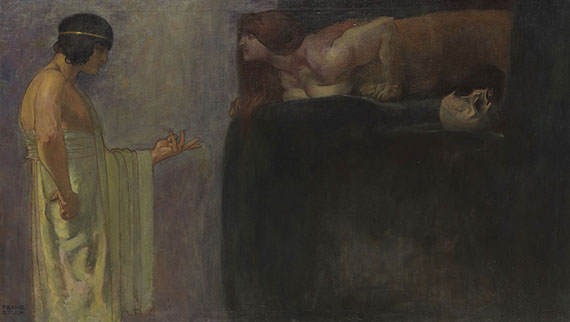Dictionary


Proto-Renaissance
The term "Proto-Renaissance", coined by Jacob Burckhart, refers to the period pre-dating the Renaissance. Between the 12th and 14th centuries, painters, sculptors and architects became increasingly inspired by ancient Greek and Roman art. The Proto-Renaissance took place in Italy, specifically Tuscany, and to a lesser extent, Southern France. It had a significant impact on the development of Renaissance art in the early 15th century.
Nicola Pisano (1220/25-78) is regarded as the main exponent of Proto-Renaissance sculpture. The visual language of his reliefs was influenced by the antique artworks that he studied, which resulted in a new way of observing the natural world, and his own interpretation of folds, robes, and the shape of the body beneath them.
The Florentine church, San Miniato al Monte (1013/18-c.1207), is regarded the important Proto-Renaissance building, due to its strict adherence to the spatial division of early Christian basilicas, and the rich marble encasing of exteriors and interiors. The marble incrustation, which lends the building a stately and powerful quality, subsequently became a characteristic of Proto-Renaissance church architecture. The baptistery in Florence (11th-12th century), or Pisa Cathedral (from 1063) are two examples of this kind of architecture.
The term "Proto-Renaissance", coined by Jacob Burckhart, refers to the period pre-dating the Renaissance. Between the 12th and 14th centuries, painters, sculptors and architects became increasingly inspired by ancient Greek and Roman art. The Proto-Renaissance took place in Italy, specifically Tuscany, and to a lesser extent, Southern France. It had a significant impact on the development of Renaissance art in the early 15th century.
Nicola Pisano (1220/25-78) is regarded as the main exponent of Proto-Renaissance sculpture. The visual language of his reliefs was influenced by the antique artworks that he studied, which resulted in a new way of observing the natural world, and his own interpretation of folds, robes, and the shape of the body beneath them.
The Florentine church, San Miniato al Monte (1013/18-c.1207), is regarded the important Proto-Renaissance building, due to its strict adherence to the spatial division of early Christian basilicas, and the rich marble encasing of exteriors and interiors. The marble incrustation, which lends the building a stately and powerful quality, subsequently became a characteristic of Proto-Renaissance church architecture. The baptistery in Florence (11th-12th century), or Pisa Cathedral (from 1063) are two examples of this kind of architecture.
Offers
Headquarters
Joseph-Wild-Str. 18
81829 Munich
Phone: +49 89 55 244-0
Fax: +49 89 55 244-177
info@kettererkunst.de
Louisa von Saucken / Undine Schleifer
Holstenwall 5
20355 Hamburg
Phone: +49 40 37 49 61-0
Fax: +49 40 37 49 61-66
infohamburg@kettererkunst.de
Dr. Simone Wiechers / Nane Schlage
Fasanenstr. 70
10719 Berlin
Phone: +49 30 88 67 53-63
Fax: +49 30 88 67 56-43
infoberlin@kettererkunst.de
Cordula Lichtenberg
Gertrudenstraße 24-28
50667 Cologne
Phone: +49 221 510 908-15
infokoeln@kettererkunst.de
Hessen
Rhineland-Palatinate
Miriam Heß
Phone: +49 62 21 58 80-038
Fax: +49 62 21 58 80-595
infoheidelberg@kettererkunst.de
We will inform you in time.




